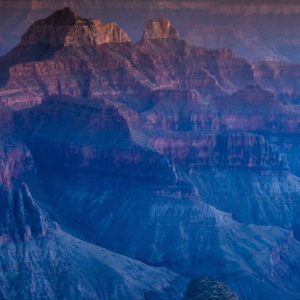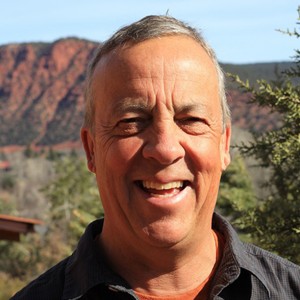By Casey Sheahan
 Late in the winter sometime around 1980 when I was about 25, two friends and I explored the Chaco Canyon and hiked a lot across the Grand Canyon, from South Rim to North, with light cross-country racing skis strapped on our packs. The air was warm that first night as we pitched our tent under clear skies near Phantom Ranch, by the Colorado River.
Late in the winter sometime around 1980 when I was about 25, two friends and I explored the Chaco Canyon and hiked a lot across the Grand Canyon, from South Rim to North, with light cross-country racing skis strapped on our packs. The air was warm that first night as we pitched our tent under clear skies near Phantom Ranch, by the Colorado River.
Pounding rain swept through a few hours later, and by morning, Bright Angel Creek was swollen and turbid. We shouldered packs and headed up the trail towards the North Rim, moving through nearly two billion years of geologic history. Rain turned to snow as we gained altitude, passing into the Navajo Sandstone formation. A few hours later we were gliding on skis above the North Rim, through a hushed forest of old-growth ponderosa pine.
As we gain the perspective that time provides on intense, immersive experiences, we’re given to pondering the whys and wherefores. In the decades since that trip, I’ve realized that what made those special moments possible, more than anything else, was the fact that the landscape was accessible—intact and protected—to a trio of dreamy young adventurers, and anyone else seeking recreation and renewal.
I’ve been fortunate to make a career out of my love for the outdoors, working with companies like Patagonia and Keen, which share my belief that access to wild places is foundational nourishment for the human spirit—a belief fed and watered largely by experiences like that winter Grand Canyon adventure.
“Let this great wonder of nature remain as it now is,” said President Theodore Roosevelt in 1903, a few years prior to declaring the Grand Canyon a national monument. “Do nothing to mar its grandeur, sublimity and loveliness. You cannot improve on it. But what you can do is to keep it for your children, your children’s children, and all who come after you, as the one great sight which every American should see.”
Roosevelt sought to protect the Grand Canyon against the threat of extractive mining and commercial development because he saw its value as a source of inspiration for all Americans. But despite being upgraded to national park status in 1919 and doubled in size in 1975, the Grand Canyon and its surroundings are still under siege, more than 100 years later. That’s why I’m asking President Obama to protect the Grand Canyon watershed with national monument status, using his powers under the Antiquities Act of 1906.
 That forest we skied into on the North Rim is the largest stand of old-growth Ponderosas left in the country, a vital link to adjacent ecosystems, and home to numerous dependent species of animals like mule deer and the rare Kaibab squirrel. But it’s still being aggressively logged thanks to a lack of sensible protections.
That forest we skied into on the North Rim is the largest stand of old-growth Ponderosas left in the country, a vital link to adjacent ecosystems, and home to numerous dependent species of animals like mule deer and the rare Kaibab squirrel. But it’s still being aggressively logged thanks to a lack of sensible protections.
The Grand Canyon watershed contains numerous uranium deposits, hundreds of abandoned mines, and several proposed mining sites. Yet the closest thing it has to permanent protection is the 20-year moratorium on new mines declared by Obama in 2012. Uranium mining is a notoriously toxic and hard-to-contain enterprise. Even if the moratorium survives current court challenges from the mining industry, who knows what might happen after it expires in 2032? What I am certain of is that allowing commercial interests to despoil this landscape for short-term profits will ensure that everyone loses.
As we pitched our tent in the snow and started the stove at our North Rim campsite that winter evening, we marveled at the sheer diversity of climates and ecosystems we had experienced in just 24 hours—from the warmth of the desert Southwest to the cold powder of a sub-alpine forest. We sipped hot tea and gazed across the chasm from North Rim to South, utterly thrilled by the sight.
Join me in supporting the designation of Grand Canyon Watershed National Monument. For more about how you can get involved, visit GrandCanyonWatershed.org.
Casey Sheahan has been a leader in the outdoor industry for more than 30 years. The former CEO of Patagonia, he has also held executive roles at Nike, Merrell, American Recreation, and Powder Magazine. He now serves on the Keen Footwear board of directors and works as a senior advisor at Backbone Media.
Photo Credits: Ian Shive / Tandem Still + Motion (TOP); Penn Newhard (MIDDLE); Casey Sheahan (BOTTOM)

